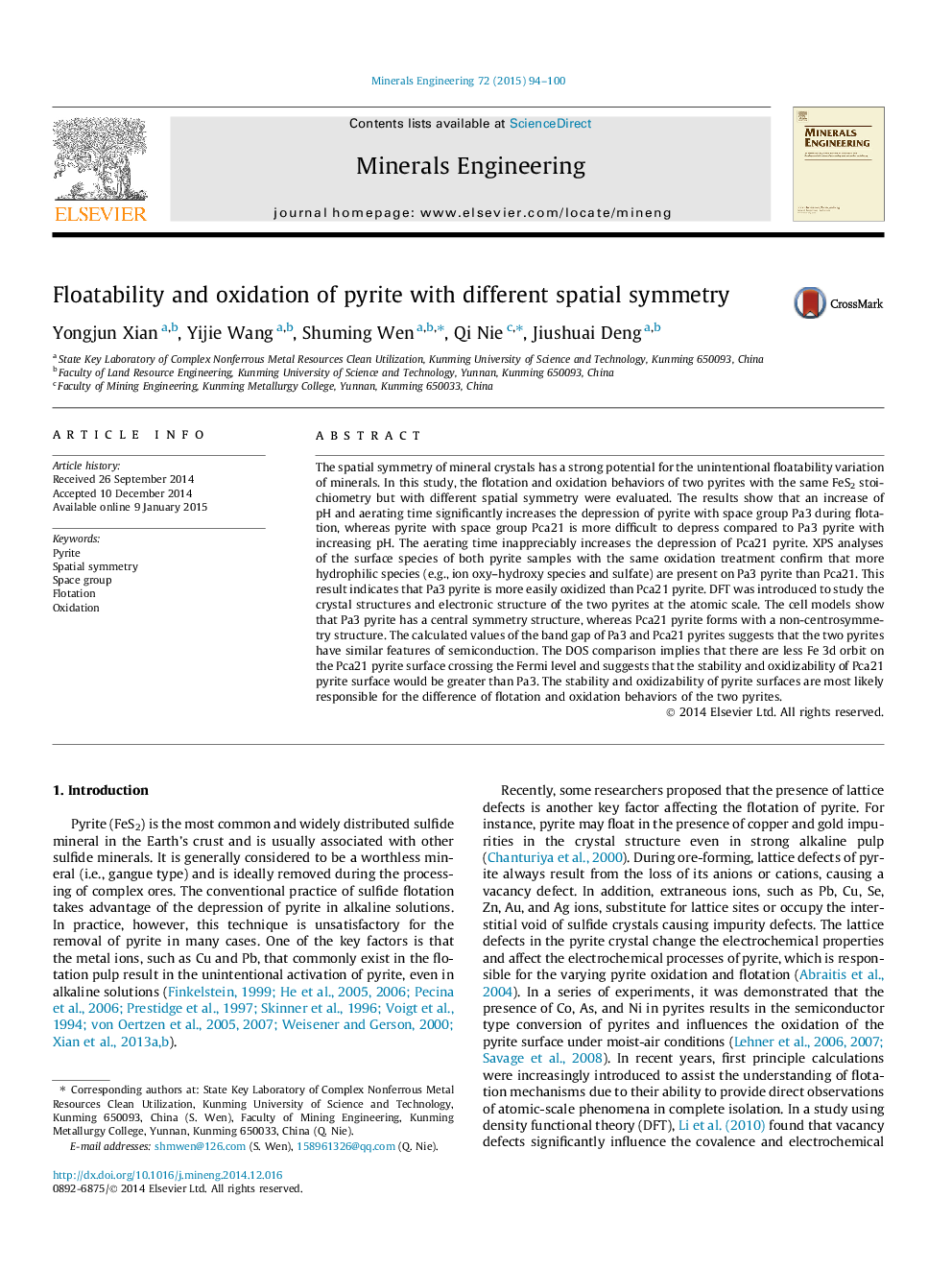| Article ID | Journal | Published Year | Pages | File Type |
|---|---|---|---|---|
| 233116 | Minerals Engineering | 2015 | 7 Pages |
•Pyrites with different spatial symmetry display different flotation performance.•Pyrite with space groups of Pa3 is more favorite to be oxidized than Pca21 pyrite.•The stability is responsible for the variance of floatation and oxidation of pyrites.
The spatial symmetry of mineral crystals has a strong potential for the unintentional floatability variation of minerals. In this study, the flotation and oxidation behaviors of two pyrites with the same FeS2 stoichiometry but with different spatial symmetry were evaluated. The results show that an increase of pH and aerating time significantly increases the depression of pyrite with space group Pa3 during flotation, whereas pyrite with space group Pca21 is more difficult to depress compared to Pa3 pyrite with increasing pH. The aerating time inappreciably increases the depression of Pca21 pyrite. XPS analyses of the surface species of both pyrite samples with the same oxidation treatment confirm that more hydrophilic species (e.g., ion oxy–hydroxy species and sulfate) are present on Pa3 pyrite than Pca21. This result indicates that Pa3 pyrite is more easily oxidized than Pca21 pyrite. DFT was introduced to study the crystal structures and electronic structure of the two pyrites at the atomic scale. The cell models show that Pa3 pyrite has a central symmetry structure, whereas Pca21 pyrite forms with a non-centrosymmetry structure. The calculated values of the band gap of Pa3 and Pca21 pyrites suggests that the two pyrites have similar features of semiconduction. The DOS comparison implies that there are less Fe 3d orbit on the Pca21 pyrite surface crossing the Fermi level and suggests that the stability and oxidizability of Pca21 pyrite surface would be greater than Pa3. The stability and oxidizability of pyrite surfaces are most likely responsible for the difference of flotation and oxidation behaviors of the two pyrites.
Graphical abstractFigure optionsDownload full-size imageDownload as PowerPoint slide
